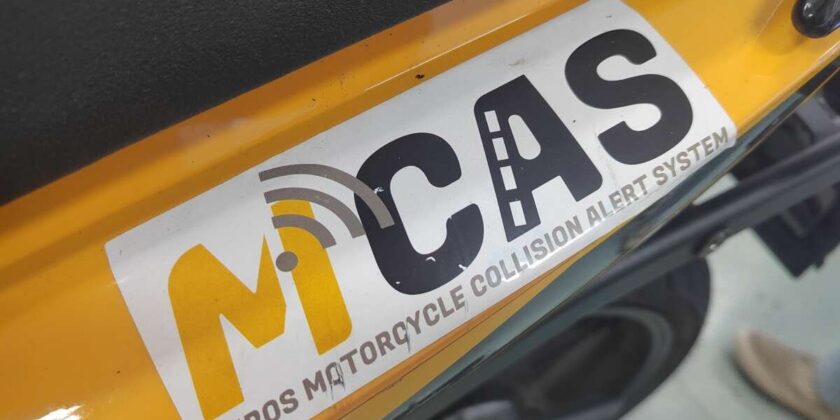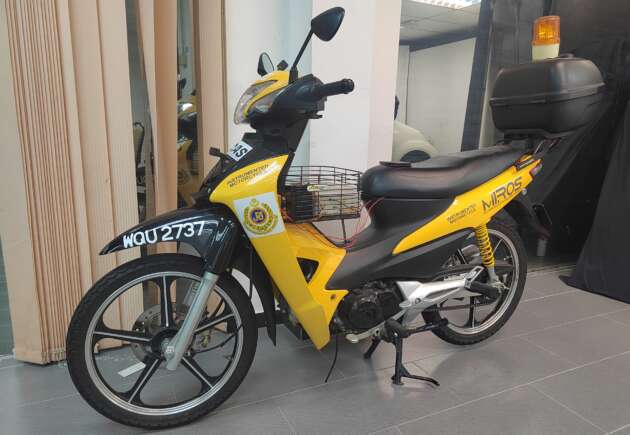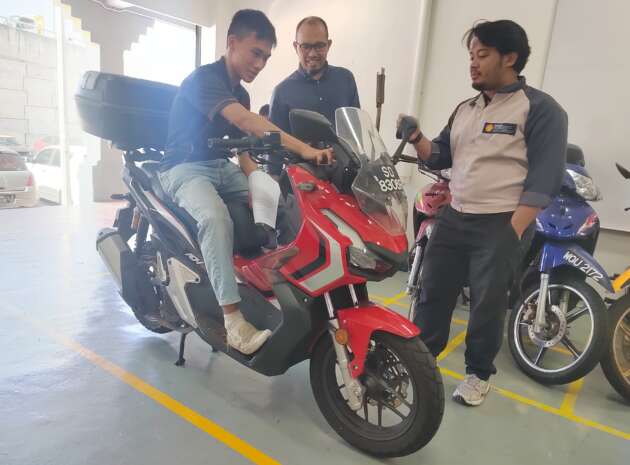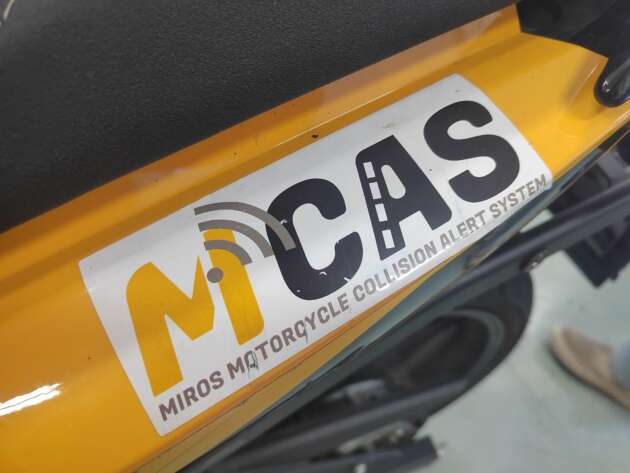After calling for public participation in the Motorcycle Collision Alert System (MCAS) test, the Malaysian Institute of Road Safety (MIROS) offered a slot to paultan.org. Using his personal Honda ADV150, paultan.org Web Editor Mohan visited the MIROS office in Kajang, Selangor, to have the system installed.
Meeting up with MIROS Research Officer Mohd Khairul Alhapiz Ibrahim, the requirements and conditions of participating in the test were carefully explained. “The test is to gather data on motorcycle collision alert using this prototype MCAS,” said Khairul.
Jointly funded by MIROS and highway concessionaire PLUS, the study is to determine factors behind the high incidence of collisions between motorcycles and stationary vehicles on the highway and if such a system, installed on a motorcycle, will reduce the incident rate. “MIROS data found a large number of motorcycle collisions with stationary vehicles, notably large trailers parked on the emergency lane,” explains Khairul.
“We were perplexed why such things were happening, especially during daylight, in good weather and clear highway conditions,” he said. “More especially, we wondered why there were no signs of the rider braking or trying to avoid the collision. There weren’t even skid marks on the tarmac.”
“The prototype MCAS we have is designed to be light, simple and easy to install on any motorcycle or scooter below 250 cc,” Khairul said. In prototype form, the system operates as a stand alone off its own battery supply, and uses Light Detection and Ranging (LIDAR) to determine if the rider’s path is obstructed.
Detecting a stationary vehicle or object up to between 150 to 200 metres directly ahead of the rider, the system then issues a visual and audible warning to the rider in the form of a set of LEDs that indicate proximity and an electronic buzzer.
“In the case of riding through heavy traffic where false signals may occur, MCAS comes with a ‘mute’ button with only the visual warning activated,” said Khairul. During the trial of the system on Mohan’s scooter, data will be collected both from the onboard MCAS as well as a GoPro camera provided by MIROS.
Primarily meant to be used on Malaysian highways, MIROS does not impose any conditions on the rider’s location. “We want to collect as much real world data as possible to ensure the reliability of MCAS,” Khairul explained.
Asked if MCAS will ever become publicly available, Khairul said that is a question for the future. “Right now, this is just a prototype. We have installed it on 22 two-wheelers so far, including two of our own test vehicles. From the data we collect, we will determine if there is a commercial application for it,” he said.
MIROS intends to make MCAS small and affordable, and able to be retrofitted to a wide variety of motorcycles and scooters below 250 cc. In the meantime, paultan.org will use MCAS on a daily basis both for short and long journeys over a three to six month period, and will report back on how it performs.
Source: Read Full Article






